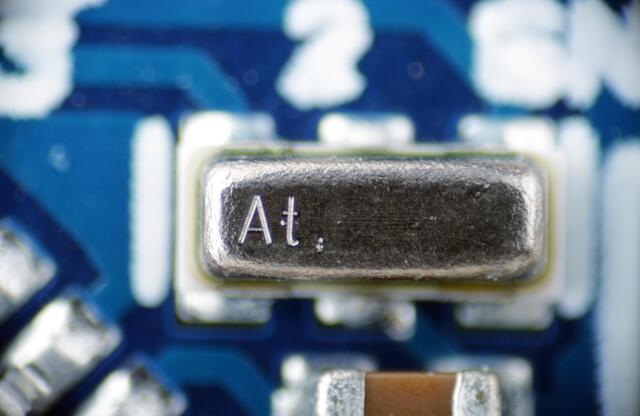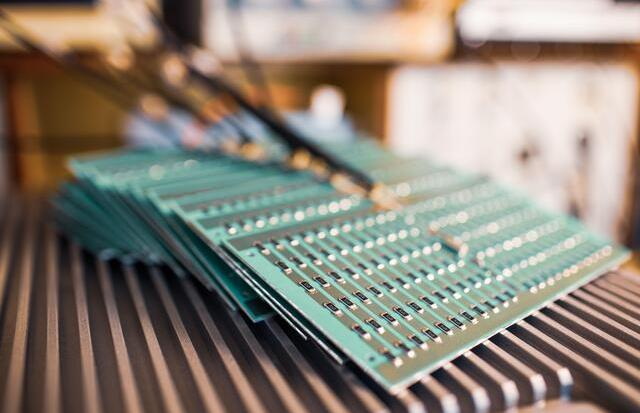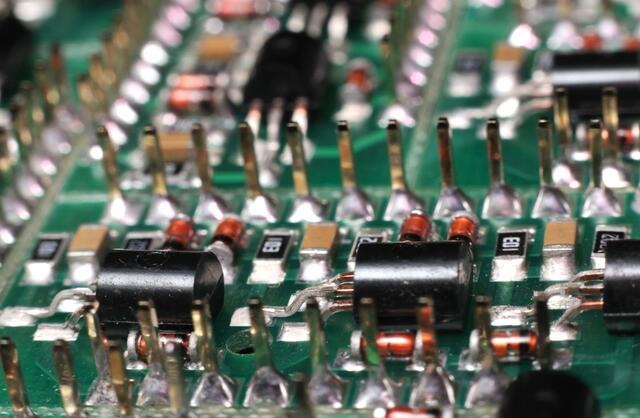Content Menu
● Component Placement Accuracy Issues
● Solder Defects
● Non-Wetting or De-Wetting
● Inspection and Testing Challenges
● Adhesion and Peel Strength Defects
● Thermal Management Issues
● Component Damage During Handling
● Supply Chain Issues
● Solder Balling
● Insufficient Fills
● Conclusion
● FAQ
>> 1. What is Surface Mount Technology (SMT)?
>> 2. What are common defects in SMT assembly?
>> 3. How can manufacturers improve inspection processes in SMT?
>> 4. Why is thermal management important in SMT production?
>> 5. What strategies can mitigate supply chain risks in SMT?
● Citations:
Surface Mount Technology (SMT) has revolutionized the electronics manufacturing industry, enabling the assembly of electronic components onto printed circuit boards (PCBs) with remarkable efficiency and precision. However, despite its advantages, SMT line production is fraught with challenges that can significantly affect product quality, production efficiency, and overall operational success. This article explores the common challenges in SMT line production, their implications, and potential solutions to mitigate these issues.

Component Placement Accuracy Issues
One of the most critical aspects of SMT is the precise placement of components on the PCB. Any deviation from the designated position can lead to electrical failures, short circuits, or other performance issues. Common causes of component placement accuracy issues include:
- Defective or Worn-Out Placement Heads: Over time, the mechanical components of pick-and-place machines can wear out, leading to inaccuracies in component placement.
- Incorrect Calibration of Placement Machines: Regular calibration is essential to ensure that placement machines function correctly.
- Inaccuracies in CAD Data or Board Design: Discrepancies between the design files and actual components can lead to misalignment during assembly.
To address these issues, manufacturers should implement regular maintenance schedules for equipment and ensure that CAD data aligns accurately with component specifications. Additionally, using advanced pick-and-place machines equipped with vision systems can enhance placement accuracy by providing real-time feedback on component positioning.
Solder Defects
Solder defects are a major concern in SMT production as they directly affect the electrical conductivity and reliability of circuits. Common solder defects include:
- Solder Bridging: This occurs when excess solder forms an unintended connection between two pads, potentially leading to short circuits. It often arises from improper solder paste application or incorrect reflow profiles.
- Insufficient Solder Joints: Insufficient solder can result in weak electrical connections that may fail over time. This issue frequently stems from inadequate solder paste deposition or clogs in stencil apertures.
- Tombstoning: A phenomenon where one side of a component lifts off the PCB during reflow soldering due to uneven heating.
To mitigate solder defects, manufacturers should focus on optimizing solder paste application techniques and ensuring that reflow profiles are appropriately adjusted for different components. Implementing automated inspection systems can also help identify solder defects early in the production process.
Non-Wetting or De-Wetting
Non-wetting occurs when solder fails to bond properly with the component leads or PCB pads. This problem can arise from several factors:
- Poor PCB Finish: Inadequate surface preparation can hinder proper solder adhesion.
- Excessive Soaking Time During Reflow: If components are exposed to heat for too long, it can exhaust the flux's effectiveness before soldering occurs.
- Insufficient Heat During Reflow: Inadequate heating may prevent flux activation, leading to poor solder joints.
To combat non-wetting issues, it is crucial to ensure that PCBs are manufactured with high-quality finishes and that reflow processes are closely monitored for temperature consistency. Regular training for operators on proper handling techniques can also help minimize these risks.
Inspection and Testing Challenges
The complexity and density of SMT circuits pose significant challenges for inspection and testing processes. Common issues include:
- Inability to Detect Hidden Defects: Defects located beneath components may go unnoticed without advanced inspection techniques.
- Limited Accessibility for Testing Equipment: The close proximity of components can restrict access for inspection tools.
To enhance inspection capabilities, manufacturers should consider utilizing advanced techniques such as Automated Optical Inspection (AOI) and X-ray inspection systems to detect hidden defects effectively. Additionally, incorporating inline testing systems during production can help identify issues early on.
Adhesion and Peel Strength Defects
Adhesion defects can lead to poor bonding between components and PCBs, resulting in mechanical failures during operation. Factors contributing to adhesion issues include:
- Inadequate Surface Preparation: Proper cleaning and treatment of surfaces are essential for achieving strong adhesion.
- Improper Solder Paste Application: Ensuring uniform application of solder paste is critical for maintaining adhesion strength.
Manufacturers should implement rigorous quality control measures during the solder paste printing process to minimize adhesion defects. Utilizing high-quality materials and ensuring proper storage conditions for solder paste can also improve adhesion outcomes.
Thermal Management Issues
Thermal management is crucial in SMT production as components are sensitive to thermal stress. Common thermal management challenges include:
- Overheating Components During Reflow: Excessive heat can damage sensitive electronic components, leading to failures.
- Inadequate Cooling Rates: Rapid cooling can induce thermal shock in components, causing cracks or fractures.
To address thermal management challenges, manufacturers should optimize reflow profiles and cooling rates based on component specifications. Implementing temperature monitoring systems during production can provide valuable data for improving thermal management practices.

Component Damage During Handling
Components may sustain damage during handling, placement, or reflow processes. Common causes of damage include:
- Mechanical Stress During Placement: Improper handling techniques can lead to physical damage such as nicks or fractures.
- Electrostatic Discharge (ESD): Sensitive components are at risk from ESD events during handling if proper precautions are not taken.
Implementing stringent handling protocols and utilizing ESD-safe materials can significantly reduce component damage risks. Regular training sessions for operators on ESD awareness and proper handling techniques are also essential.
Supply Chain Issues
Supply chain disruptions can impact SMT line production by delaying component availability or increasing costs. Factors contributing to supply chain challenges include:
- Global Market Fluctuations: Changes in demand and supply dynamics can lead to shortages or excess inventory.
- Logistical Challenges: Transportation delays or customs issues can hinder timely delivery of critical components.
To mitigate supply chain risks, manufacturers should establish strong relationships with suppliers and consider diversifying their supplier base to reduce dependency on single sources. Implementing inventory management systems that utilize predictive analytics can also help anticipate supply chain disruptions before they occur.
Solder Balling
Solder balling is a common problem encountered in SMT assembly where tiny spherical particles of solder isolate from the main body during reflow. This poses a significant concern as it can create deceptive connections between adjacent leads, ultimately causing functional issues within the electrical circuit.
Common causes include moisture contamination of the solder paste and improper reflow profiles. To address this issue, manufacturers should ensure proper storage conditions for solder paste to prevent moisture absorption and optimize reflow parameters based on component requirements.
Insufficient Fills
Having too little solder in your SMT assembly is detrimental as it results in weak joints that may break or create intermittent connections later on. This issue often arises when there isn't enough solder paste applied during printing or when stencil apertures become blocked with dried-up paste.
To mitigate insufficient fills, manufacturers must ensure proper stencil design and maintenance while applying adequate pressure across the squeegee blade during the printing process. Regular checks for stencil cleanliness are crucial as well.
Conclusion
Surface Mount Technology has transformed electronics manufacturing by enhancing efficiency and enabling complex designs; however, it presents numerous challenges that require careful management to ensure quality production outcomes. By addressing common issues such as component placement accuracy, solder defects, inspection challenges, thermal management, supply chain disruptions, and more through proactive strategies and advanced technologies, manufacturers can optimize their SMT lines for better performance and reliability while minimizing defects and enhancing overall product quality.

FAQ
1. What is Surface Mount Technology (SMT)?
Surface Mount Technology (SMT) is a method used in electronics manufacturing where components are mounted directly onto the surface of PCBs rather than being inserted into holes drilled through the board.
2. What are common defects in SMT assembly?
Common defects include solder bridging, insufficient solder joints, tombstoning, non-wetting issues, adhesion defects among others that affect electrical connectivity and reliability.
3. How can manufacturers improve inspection processes in SMT?
Manufacturers can enhance inspection processes by employing advanced techniques such as Automated Optical Inspection (AOI) and X-ray inspections which help detect hidden defects effectively.
4. Why is thermal management important in SMT production?
Thermal management is crucial because excessive heat can damage sensitive components while inadequate cooling rates may induce thermal shock leading to mechanical failures.
5. What strategies can mitigate supply chain risks in SMT?
Strategies include establishing strong relationships with multiple suppliers, diversifying sourcing options, maintaining buffer stock levels, and utilizing predictive analytics for demand forecasting.
Citations:
[1] https://jhdpcb.com/blog/efficient-smt-assembly/
[2] https://www.andwinmcpcb.com/smt-production-process-common-issues-and-challenges/
[3] https://www.pcbjhy.com/blog/pros-and-cons-of-smt-pcb-assembly/
[4] https://www.vse.com/blog/2022/03/15/8-common-smt-placement-issues-and-solutions/
[5] https://smt.asmpt.com/en/news-center/press/minimizing-process-risks-in-smt-production/
[6] https://www.pcb-hero.com/blogs/lisas-column/surface-mount-technology-common-problems-and-solutions-for-efficient-smt-assembly
[7] https://www.protoexpress.com/blog/common-errors-surface-mount-technology-smt/
[8] https://www.linkedin.com/advice/1/what-benefits-challenges-using-surface-mount-technology
[9] https://www.macdermidalpha.com/sites/default/files/2021-09/ALPHA%20SMT%20Troubleshooting%20Guide%20EN%2001Jun20%20BR_0.pdf
[10] https://www.pcbasic.com/blog/surface-mount_technology_issues.html




















